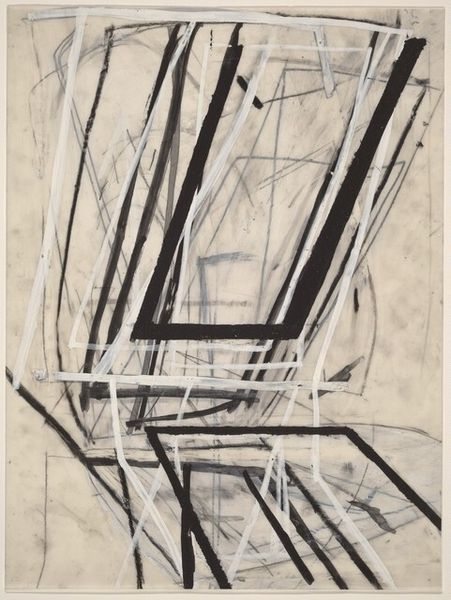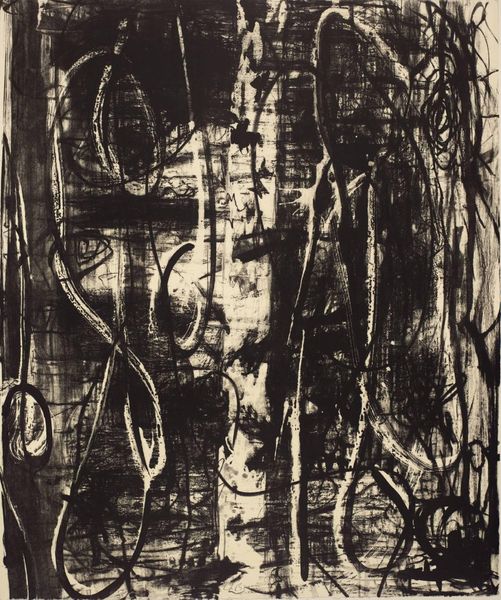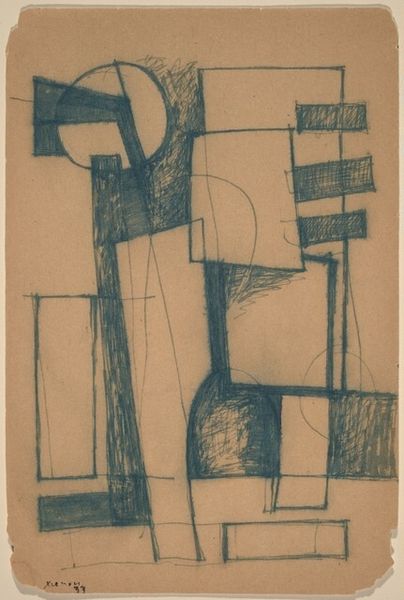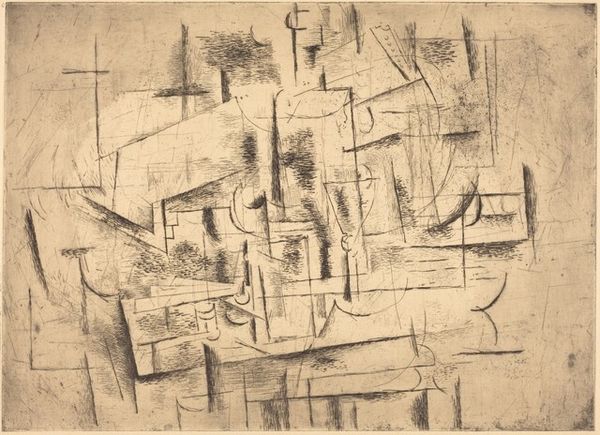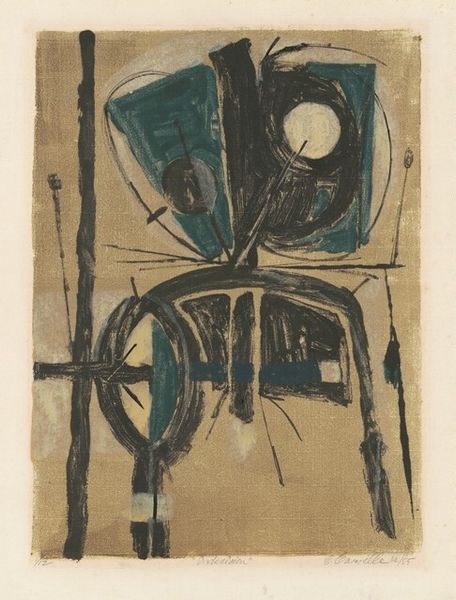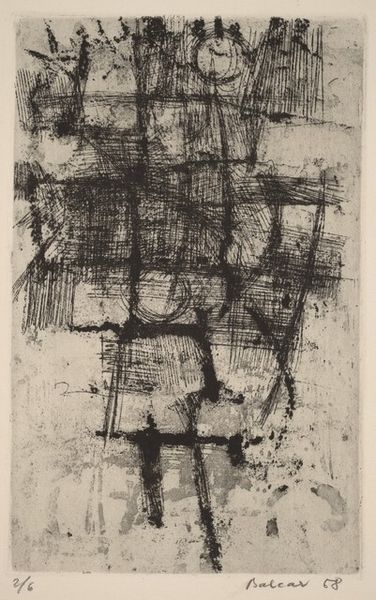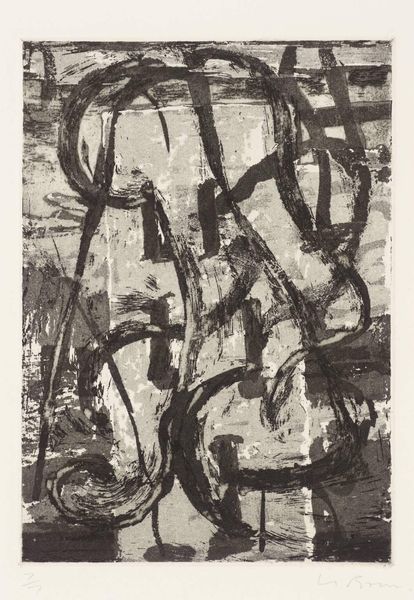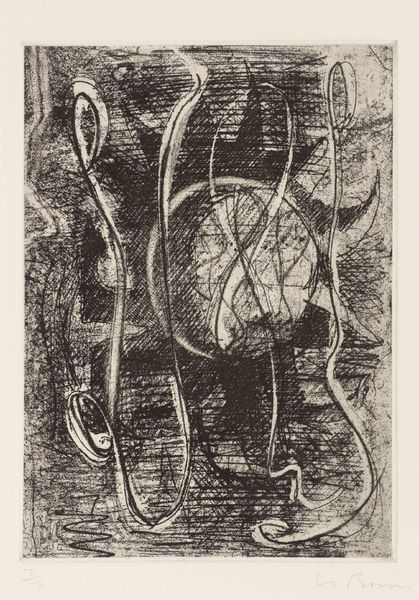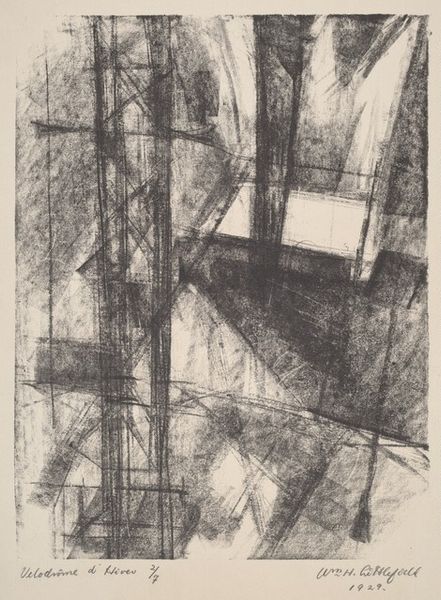
print, etching
#
abstract-expressionism
# print
#
etching
#
form
#
abstraction
#
line
Dimensions: plate: 429 x 350 mm image: 414 x 335 mm sheet: 556 x 441 mm
Copyright: National Gallery of Art: CC0 1.0
Editor: Here we have Harry Hoehn's "Wasteland," created in 1952. It’s an abstract etching, and it immediately strikes me as bleak and unsettling, yet strangely captivating with its bold lines and textures. What story do you think this piece is trying to tell? Curator: Looking at "Wasteland" through a historical lens, I’m struck by its post-war context. Created in 1952, it reflects the anxieties and uncertainties prevalent in the aftermath of World War II. Etchings like these gained traction, largely circulated by small galleries. Does the composition evoke a sense of physical or perhaps even emotional devastation to you? Editor: Absolutely. The jagged lines and contrasting tones definitely convey a sense of disarray. It feels almost industrial, like ruined architecture. Curator: Exactly! Hoehn masterfully uses the medium of printmaking to comment on urban decay and the psychological landscape of the time. The “wasteland” of the title might refer to the bombed-out cities of Europe, or perhaps even the spiritual desolation that many felt during the Cold War. Notice how these prints democratize access to artwork, often seen as avant-garde at the time. How do you feel this piece positions itself publicly? Editor: I see what you mean. It makes the anxieties of the time more accessible by breaking down traditional artistic barriers. I initially focused on my own interpretation, but it's fascinating to consider the wider political and social influences on Hoehn’s work. Curator: Precisely! And it speaks to the role of art as a mirror reflecting the complex realities of its time, and questioning its role for the masses. It enriches my understanding to hear your immediate impressions as well. Editor: Thanks for shedding light on the historical influences and societal impact, I appreciate the added context. Curator: My pleasure! It’s always rewarding to explore the historical underpinnings that shape our interpretations.
Comments
No comments
Be the first to comment and join the conversation on the ultimate creative platform.


